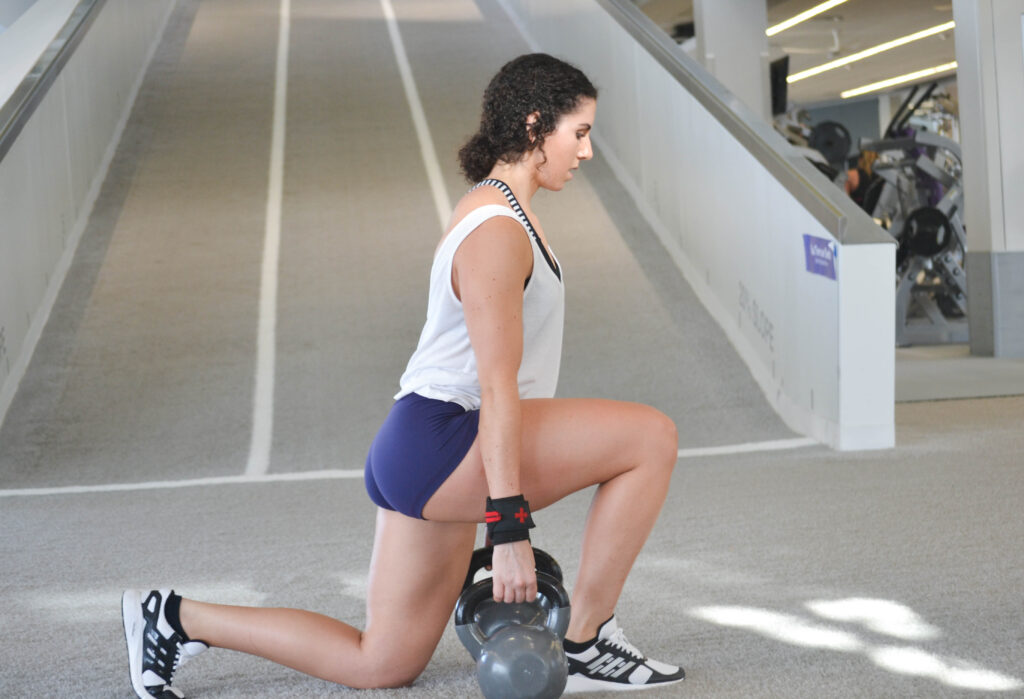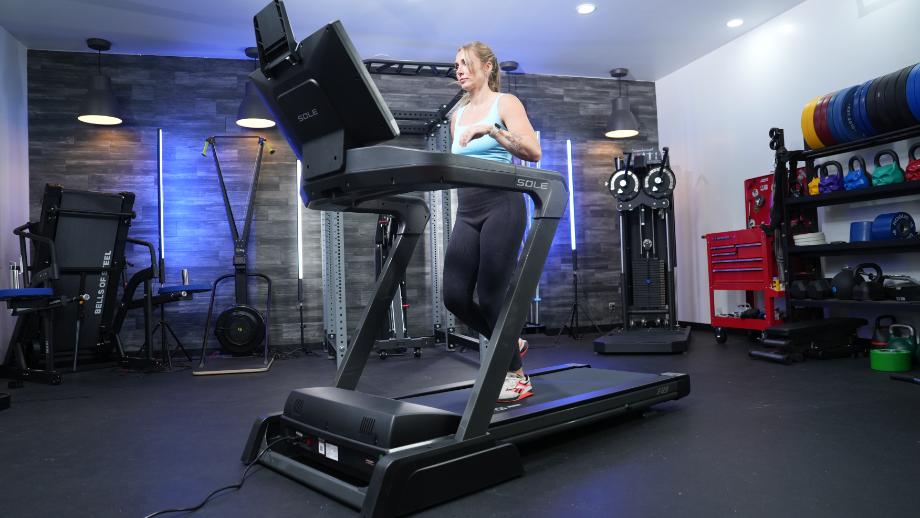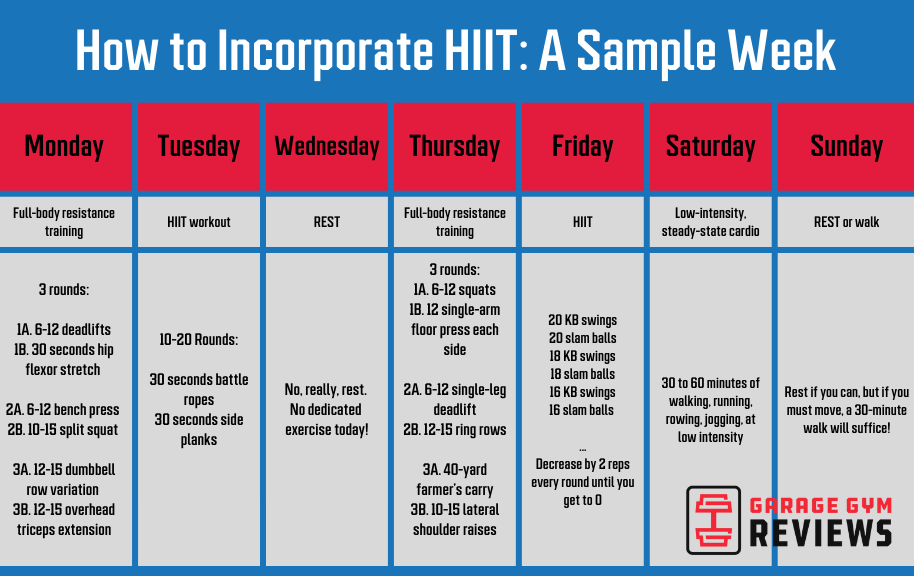As a certified personal trainer, the question I often get asked is “How much HIIT per week should I do?”
Without knowing anything about a person’s goals or level of stress and training experience, this question is difficult to answer. How much high-intensity interval training you do depends on your fitness level, goals, ability to recover, and more. Here we’ll take the view from 10,000 feet to give you some guidelines on how much HIIT per week you should be doing.
RELATED: Best Muscle Recovery Tools
Ready to burn body fat and get that heart rate up? Then let’s go.
What Is HIIT Training?
HIIT is short for high-intensity interval training. This cardio workout is a form of exercise that involves short, intense cardio bouts followed by a lesser intense recovery interval, then repeated for a certain amount of sets. Generally, HIIT intervals last between 20 seconds to 3 minutes with the same amount of recovery or more before doing it again.

Judging your intensity between 1 (easy) to 10 (I’m dying), your HIIT interval should feel between 7 and 9 depending on the length of your interval. For example, holding a high-intensity level for 30 seconds is easier than holding it for 3 minutes. Adjusting your intensity based on the length of the interval always works best.
HIIT vs Steady-State Cardio Training
The two main types of cardio are HIIT and steady-state cardio (SST, also called aerobic training). The main differences between HIIT and SST are time, intensity, and duration. HIIT is short, sweet, and intense, like eight rounds of 20 seconds of burpees followed by 10 seconds of rest (a classic tabata protocol). Alternatively, steady-state cardio is what the name implies: a workout at a longer duration at the same pace, like running a 5K at a 10-minute pace.
HIIT session lasts anywhere from 4 to 30 minutes, while steady-state training should last between 20 to 60 minutes.
RELATED: HIIT Treadmill Workout
There’s an idea floating around the health and fitness space that HIIT is better for fat loss than SST, but in reality, both are good for fat loss1, according to recent studies. Choosing which one to do is a matter of time and preference. HIIT has significant benefits if you’re tight on time. Also, HIIT workouts often incorporate a strength element, which steady-state cardio cannot do.
Benefits Of HIIT
Understanding the benefits of HIIT should inspire you to incorporate these workouts in your training plan. While there’s nothing wrong with steady-state cardio or a long-duration weightlifting session, ramping up the intensity and reducing the total training time can produce excellent results.
Here’s what you can expect from making HIIT a regular part of your weekly routine:
Can Help Improve Cardiovascular Health
HIIT is an efficient method for improving your cardiovascular health. Alternating between periods of high-intensity exercise and recovery allows you to build both your aerobic and anaerobic capacity, which can help you perform better in other lifts and daily activities. According to a 2019 study2, HIIT can lead to improvements in your VO2 max, which measures how well your body utilizes oxygen during exercise.
Help Build Muscle
While many people associate HIIT with weight loss, it’s also effective at building muscle. According to a 2023 study3, this type of training promotes increases in lean muscle, maximal strength, and lower-limb muscle power in healthy older and young individuals.

Efficient Use of Training Time
Work smarter, not harder. That’s the biggest selling point of high-intensity training, as you can get in an excellent session in about 30 minutes. Whether you opt for a HIIT elliptical workout or take more of a muscle-building approach, you’ll get excellent bang for your buck.
Adaptable to All Fitness Levels
HIIT provides tremendous flexibility for making adaptations. Unable to perform a certain exercise? Swap it out with a suitable alternative. Not ready for a 1:1 work-to-rest ratio? Start with a 1:2 ratio so you can make it through the entire session.
No Equipment Required
While a set of kettlebells or a pair of the best adjustable dumbbells can level up your workout, you don’t need any equipment to do HIIT. Simply select your favorite bodyweight exercises and perform them in a circuit with minimal or no rest time in between. The key is working intensely—even if you’re just doing push-ups or air squats.
RELATED: HIIT Bike Workout
How Often Should You Do HIIT?
Here’s the big money question: How many times per week should you do HIIT? It depends on a lot of things like how much time you have to train, your level of training experience, and your health and fitness goals.
Given you can burn a serious amount of fat in a short time, you may be tempted to do HIIT every cardio session. However, doing so will affect your recovery between cardio and weight lifting sessions.
RELATED: Can You Incorporate Cardio Exercises Without Sacrificing Muscle Gains?
When performing HIIT, your body releases stress hormones like cortisol. A little amount of cortisol can improve your strength and immunity against the common cold. But elevating your cortisol levels constantly will hurt the body like increased fatigue, mood swings, and muscle weakness. In other words, too much HIIT may destroy your gains.

People often think a little is good then more must be better. When you start to see results and health benefits from your HIIT training, you may think adding more will lead to even better results. But you have to be careful here because you can get too much of a good thing.
The Swedish School of Sport and Health Sciences4 conducted a study where they put 11 healthy volunteers through regular HIIT sessions in which they gradually increased the amount of time they spent doing each HIIT session. When they started with only moderate amounts of HIIT, all 11 subjects improved their performance and produced more mitochondria, which is the powerhouse of your cell structure.
But when the frequency was increased without rest between sessions, their mitochondrial function started to deteriorate, the tell-tale signs of overtraining kicked in, and performance dropped. It’s only one study, but you don’t need a study to tell that too much of a good thing is a bad thing.
RELATED: HIIT Rowing Workout
How Long Should A HIIT Workout Be?
So, where is the sweet spot?
Luckily, you don’t need to carve out a ton of time in your schedule for HIIT. In fact, one of the biggest advantages of this style of training is that you can accomplish quite a bit in much less time.
Instead of spending an hour doing steady-state cardio, you can cut that time in half. Most HIIT workouts last between 20 to 45 minutes, depending on your fitness level. Sessions include a mix of high-intensity intervals and recovery periods. The work-to-rest ratio has a major impact on the difficulty of the workout, as a 1:1 ratio will force you to recover quickly.

Although 20 minutes may seem short, don’t be surprised if you’re gasping for air well before the clock strikes zero. The key is to go all-out (or as close as possible) during your work intervals, utilizing the recovery periods to bring your heart rate down and mentally prepare for the next round.
RELATED: HIIT Cardio Workouts At Home
If you’re a beginner, it’s best to ease into it with only one to two HIIT sessions per week, lasting between 10 to 30 minutes. Do this for four to six weeks before progressing. When your fitness level has improved or you are an advanced trainee, anywhere from two to four sessions of HIIT of between 10 to 30 minutes works well.
Doing back-to-back HIIT workouts is not advisable because it may raise your stress levels too high, and all your gains might disappear. Instead, training at a lower intensity between two HIIT sessions will allow your body to recover better, so you can reap the fat loss benefits of HIIT.
Just a short note on recovery and stress: If you’re highly stressed due to work or home life, or some other factor, then, adding to this with extra HIIT sessions is not your best bet. It’s better to stick with the steady-state cardio and its stress-reducing benefits.
Signs of Overtraining
Trainees mistakenly think all the gains happen in the gym and not in the rest and recovery. Training hard with HIIT and strength training causes microscopic tears in your muscles. Resting, getting enough sleep, foam rolling, and eating enough protein these tears will heal, and you will get stronger. If you don’t do any of those things, then you’re a candidate for overtraining.

Here are some tell-tale signs that you are overtraining and it’s time for a rest:
- You’re always tired after your HIIT session.
- You suffer from excessive delayed onset muscle soreness (DOMS), and you are sore for days.
- You experience mood swings.
- You aren’t sleeping enough.
- You lack the enthusiasm to train.
- You keep having nagging injuries.
- You’re dehydrated.
- You experience excessive weight loss.
If you are suffering from two or more of these symptoms, it is time to dial it back and incorporate some recovery pronto.
How to Incorporate HIIT Into a Workout Routine
Here at GGR, we don’t like to leave you hanging. Let’s put the advice into action to develop a sample weekly routine to satisfy the American Heart Association’s cardiovascular exercise guidelines of 150 minutes of moderate-intensity activity per week, and 75 minutes of intense exercise per week.
Here is an example of combining HIIT with weight training:

Monday: Full-body resistance training
Mix upper- and lower-body exercises work on all major muscle groups. Add a low-intensity walk on this day if you choose.
Tuesday: HIIT
Do any battle rope variation for 30 seconds and then immediately get into the side plank and hold it for 30 seconds. Go back to the battle ropes for another 30-second interval and do the side plank on the opposite side. Repeat this sequence for 10-20 minutes, resting when needed.

Wednesday: Rest day
Truly rest today. Your body needs time to recover.
Thursday: Full-body resistance training
Again, hitting all major muscle groups here with new exercises. Adding in a short walk is also okay to do on this day.
Friday: HIIT
Do 20 reps of kettlebell swings and the slams, decreasing by two each time you do a round until you reach two reps for each exercise (such as 20-18-16-14….2).
Saturday: Low-Intensity workout
Perform 30 to 60 minutes of low-intensity activity like walking, jogging, or rowing, in steady-state cardio.
Sunday: Rest day
If you want to move, do no more than 30 to 60 minutes of low-intensity activity like walking
How Much HIIT Per Week: Final Thoughts
HIIT is great because who doesn’t want to burn more fat in less time? It is easy to fall in love with the results you glean from doing HIIT, and you may be tempted to add more sessions. But adding will likely exceed your capacity to recover, leading to overtraining. A little HIIT is great, but a lot is not.
Depending on your training experience and fitness goals, keeping HIIT sessions around two to four per week at around 60-90 minutes per session is a sweet spot for a lot of people. Mixing your HIIT training with lower intensity training will allow you to recover better and keep improving without your gains grinding to a halt due to overtraining.
How Much HIIT Per Week: FAQs
Is a 20-minute HIIT workout a day enough?
When you’re new to combining HIIT and strength training, then yes, 20 minutes of HIIT a day is enough, as long as you don’t exceed four HIIT sessions a week. If you’re an advanced trainee with strength training goals then no, probably not. Combining your HIIT and strength training intelligently works best.
Is it safe to do HIIT every day?
When you’re performing HIIT correctly, you’re putting significant stress on your body. And too much stress is a bad thing as discussed above. So, no, it is NOT okay to do HIIT every day.
How many times should I do HIIT in a week?
As a certified personal trainer (CPT), I recommend starting with two HIIT sessions per week. This should give you enough time to recover between workouts and still allow you to enjoy the different muscle-building and cardio benefits.
Is HIIT 3 times a week enough to lose weight?
Three HIIT workouts a week should provide a sufficient stimulus to help you make progress. However, you also need to eat in a calorie deficit to lose weight.
VO2 Max Calculator
We created our own VO2 max calculator so you can estimate your cardiovascular fitness level.
References
- Keating SE, Johnson NA, Mielke GI, Coombes JS. A systematic review and meta-analysis of interval training versus moderate-intensity continuous training on body adiposity. Obes Rev. 2017 Aug;18(8):943-964. doi: 10.1111/obr.12536. Epub 2017 May 17. PMID: 28513103.
- Ito, S. (2019). High-intensity interval training for health benefits and care of cardiac diseases – The key to an efficient exercise protocol. World Journal of Cardiology, 11(7), 171–188. https://doi.org/10.4330/wjc.v11.i7.171
- Caparrós-Manosalva, C., Garrido-Muñoz, N., Alvear-Constanzo, B., Sanzana-Laurié, S., Artigas-Arias, M., Alegría-Molina, A., Vidal-Seguel, N., Espinoza-Araneda, J., Huard, N., Pagnussat, A. S., Sapunar, J., Salazar, L. A., & Marzuca-Nassr, G. N. (2023). Effects of high-intensity interval training on lean mass, strength, and power of the lower limbs in healthy old and young people. Frontiers in Physiology, 14. https://doi.org/10.3389/fphys.2023.1223069
- Flockhart M, Nilsson LC, Tais S, Ekblom B, Apró W, Larsen FJ. Excessive exercise training causes mitochondrial functional impairment and decreases glucose tolerance in healthy volunteers. Cell Metab. 2021 May 4;33(5):957-970.e6. doi: 10.1016/j.cmet.2021.02.017. Epub 2021 Mar 18. PMID: 33740420.
- American Heart Association recommendations for physical activity in adults and kids. www.heart.org. (2024, January 19). https://www.heart.org/en/healthy-living/fitness/fitness-basics/aha-recs-for-physical-activity-in-adults









